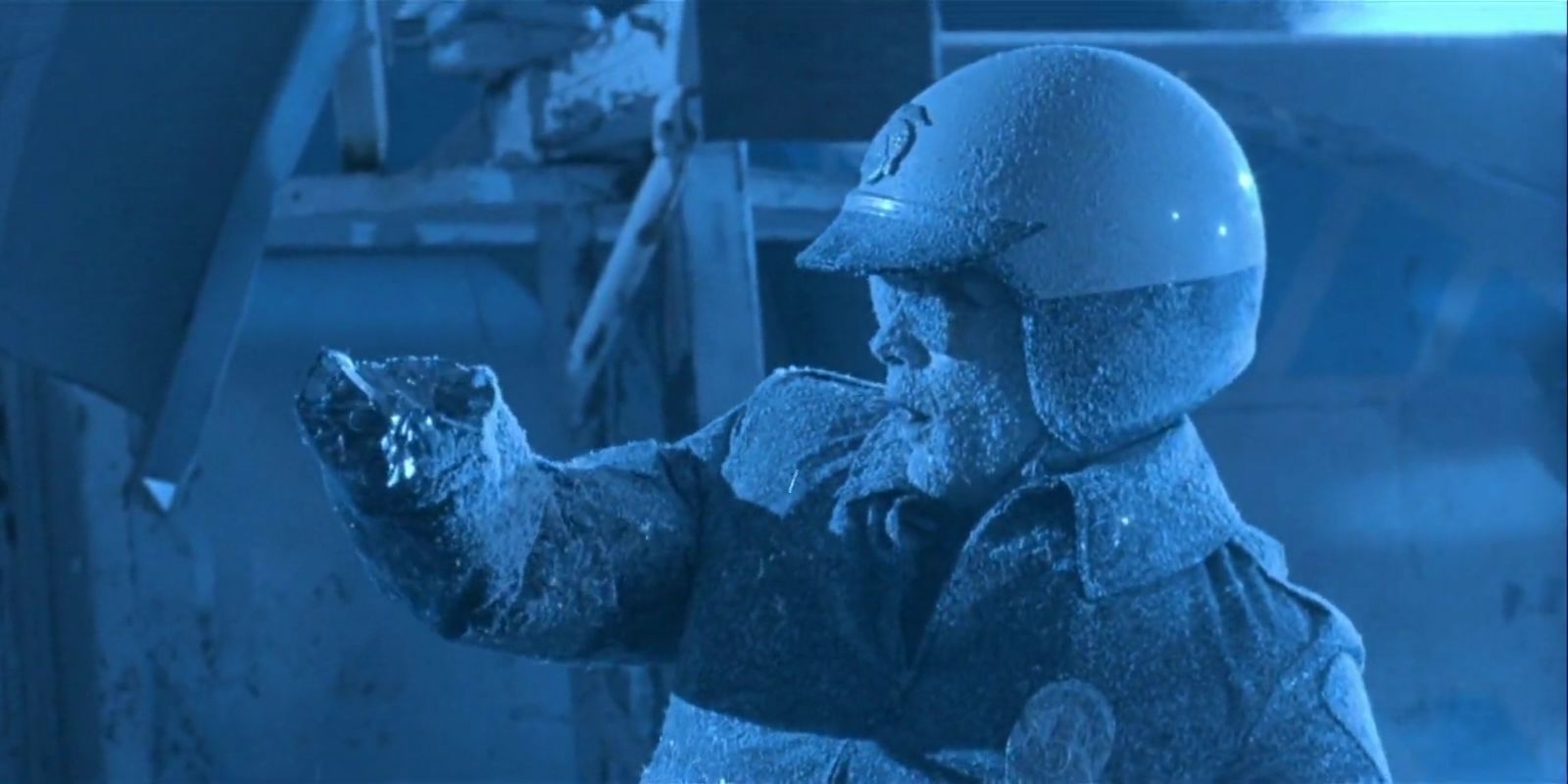For most of Terminator 2: Judgment Day, the T-1000 is portrayed as nearly invincible, but a deleted subplot explains why he ultimately lost. In The Terminator, the T-800 played by Arnold Schwarzenegger proves extremely resilient and almost impossible to fully defeat. He can’t be bargained or reasoned with, and he’s relentless, unwilling to abandon his mission at any cost. The T-800 is big, strong, an expert marksman, can drive any vehicle, and doesn’t care how much damage it takes along the way to killing its target.
Yet, two humans, Sarah Connor and Kyle Reese, are able to defeat the T-800 in the end. Thus, when it was time for Terminator 2 to happen, director James Cameron realized that the stakes had to be raised. That’s where the new villain, the T-1000 came in. Made of liquid metal, the T-1000 boasted superior strength, speed, ability to mimic human behavior and blend in, and a resistance to taking damage much higher than that possessed by the T-800. So even though Sarah and John have a T-800 on their side this time, it’s still not a fair fight.
Click the button below to start this article in quick view.
While the T-1000’s defeat in the theatrical cut of Terminator 2 can just be chalked up to the molten steel being too much to bear, there’s actually a more specific reason the T-1000 loses in the end, which a series of deleted scenes were meant to make clear. Unfortunately, they were cut for time.
Terminator 2: The Deleted T-1000 Subplot That Explains His Defeat
Right before the last act of Terminator 2, which sees Sarah, John, and the T-800 mount a final stand against the T-1000, the latter ends up covered in liquid nitrogen. To the T-1000’s clear surprise, it freezes solid, which is followed by the T-800 shattering it. Unfortunately, the heat from a nearby vat of molten steel thaws the T-1000, allowing it to reform. It’s important to understand that each molecule of the T-1000 is essentially a nano-machine designed to function within the main machine. That’s why any blasted off piece will search for and reunite with its primary mass.
In the Terminator 2 deleted scenes, it’s revealed that being frozen inflicted long-term damage on the T-1000, as he’s beginning to lose control of his morphing capabilities. As he moves through the steel mill in pursuit, the T-1000’s hands and feet begin to involuntarily blend with steel bars and grating that he touches along the way. In the original version of the scene where the T-1000 transforms into Sarah Connor, this defect was actually what allowed John to identify which was his real mother, as the fake Sarah’s feet had begun to melt into the floor. This is due to, as the novelization for the film spells out, the T-1000’s primary weakness being extreme temperatures.
So when the T-1000 lands in the vat of molten steel at the end, his frantic morphing is a desperate attempt to try and adapt to the high heat, and settle on a form he can turn into and escape. The temperature is just too high though, leading to his eventual disintegration. Why did he seem so surprised by this weakness? It’s important to remember that the T-1000 is an advanced, one-of-a-kind prototype, and was only recently created by Skynet. It’s possible the machine wasn’t even aware of this particular failing.
